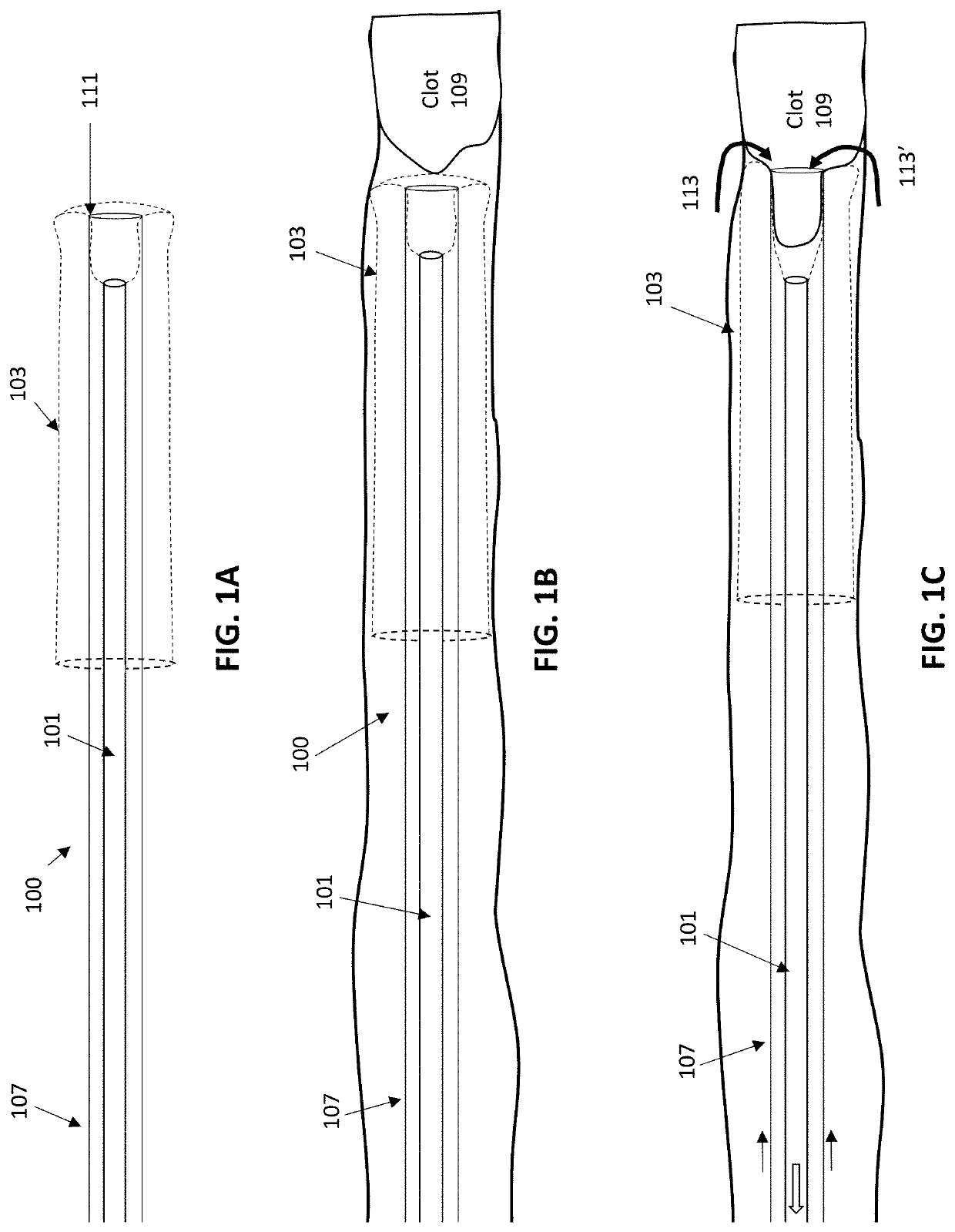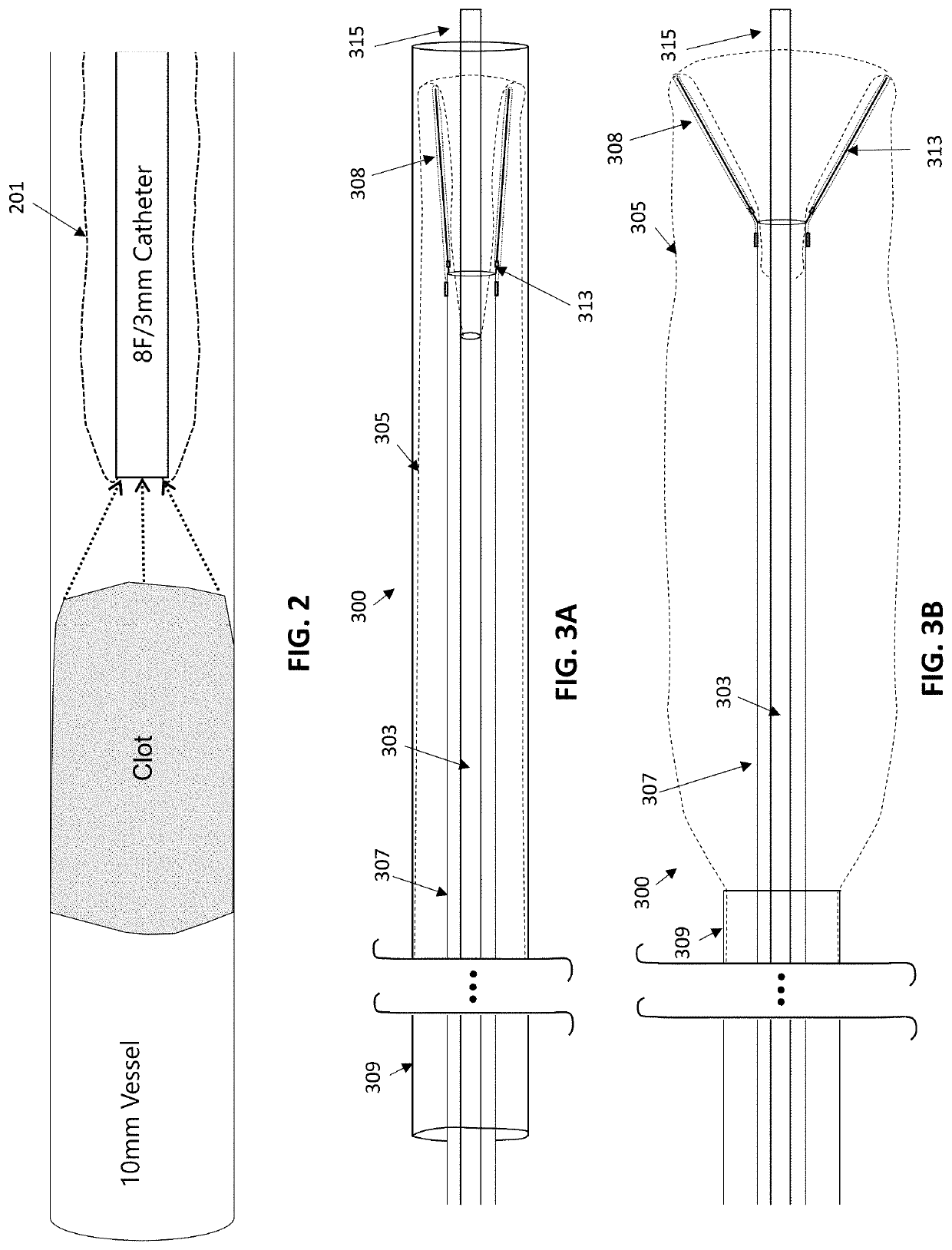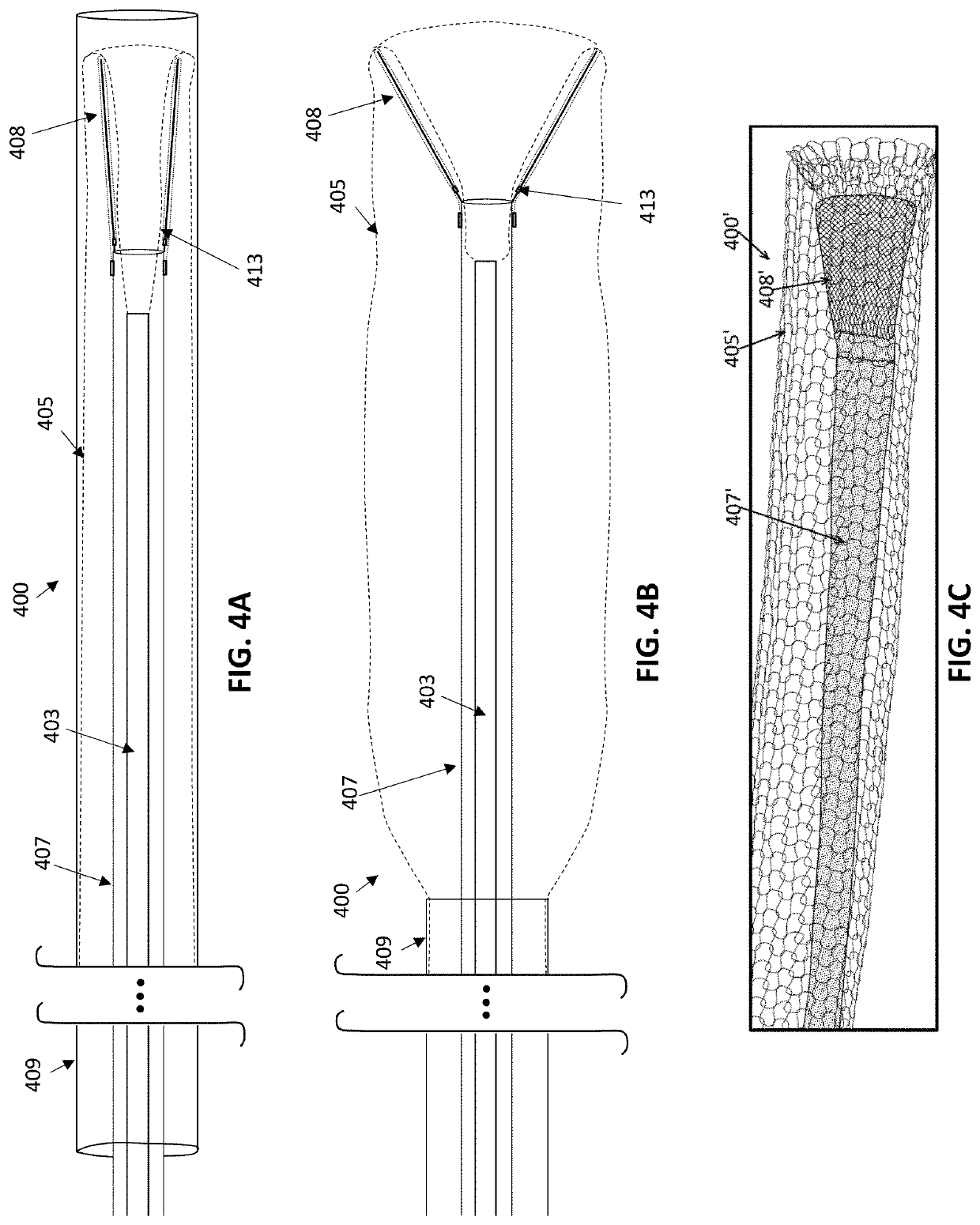Inverting thrombectomy apparatuses and methods of use
a thrombus and thrombosis technology, applied in the mechanical field, can solve the problems of insufficient or irregular blood flow through blood vessels, and achieve the effect of reducing the risk of thrombosis and thrombosis
- Summary
- Abstract
- Description
- Claims
- Application Information
AI Technical Summary
Benefits of technology
Problems solved by technology
Method used
Image
Examples
Embodiment Construction
[0110]In general, described herein are inverting tube apparatuses (e.g., devices and systems) that are particularly well suited for removal of larger-diameter clots and / or atheromas. Any of the inverting tube apparatuses may include an inversion support catheter having an elongate and flexible body with an expandable funnel at a distal end of the body, and also a flexible tube that rolls and inverts over the inversion support catheter including the expandable funnel when the flexible tube is pulled proximally into the inversion support catheter. The inversion support catheters may be used with or without a flexible tube.
[0111]Previously described mechanical inverting tube apparatuses (also referred to as “mechanical thrombectomy apparatuses”) were configured to remove clot effectively, as shown in FIGS. 1A-1C. The apparatuses and methods of using them described herein may particularly effective for use with the peripheral vasculature, including for use with relatively larger outer d...
PUM
 Login to View More
Login to View More Abstract
Description
Claims
Application Information
 Login to View More
Login to View More - R&D
- Intellectual Property
- Life Sciences
- Materials
- Tech Scout
- Unparalleled Data Quality
- Higher Quality Content
- 60% Fewer Hallucinations
Browse by: Latest US Patents, China's latest patents, Technical Efficacy Thesaurus, Application Domain, Technology Topic, Popular Technical Reports.
© 2025 PatSnap. All rights reserved.Legal|Privacy policy|Modern Slavery Act Transparency Statement|Sitemap|About US| Contact US: help@patsnap.com



